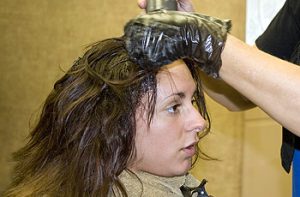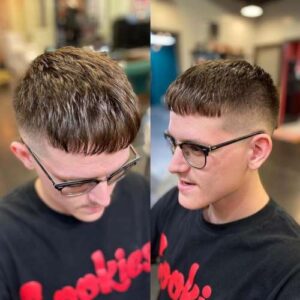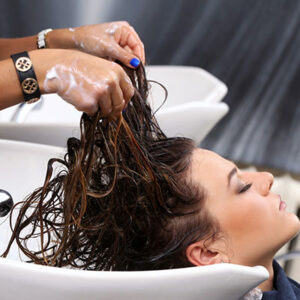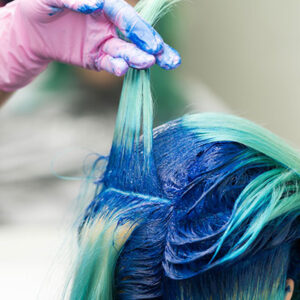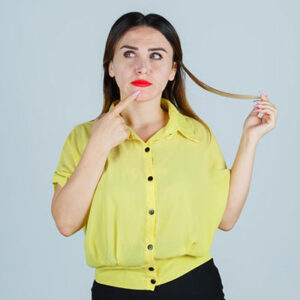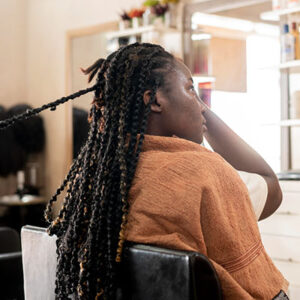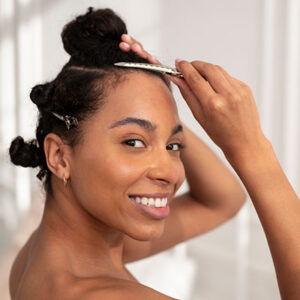Bleaching your hair with Clorox has recently become one of the hottest hair trends. With the help of before-and-after photos and social media endorsements, it may seem like an affordable and effective way to lighten up your hair. But is it really safe and reliable?
In this article, we’ll give you an in-depth look at the pros and cons of using Clorox to bleach your hair. We’ll provide you with the facts so you can make an informed decision about whether or not bleaching your hair with Clorox is the right choice for you. Don’t miss out on the opportunity to get the latest scoop on this trending hair care method!
What is Clorox?
Clorox is a trusted name in cleaning and disinfecting products. With an impressive range of products, including bleach and other disinfectants, Clorox helps to keep homes, businesses, and other spaces clean and germ-free. From laundry to kitchen cleaning and even outdoor cleaning, Clorox has a product for every need.
However, Clorox bleach is only meant for approved household uses, such as washing dishes, wiping down countertops, and cleaning tiles. Under no circumstances should Clorox be used to bleach hair. Doing so can result in serious damage to your hair and scalp, including hair loss, chemical burns, and lifeless, brittle hair. The end result of Clorox bleaching could be far worse than the initial hair color. Avoid this kind of risk and stick to Clorox’s approved uses.
Below is a list of Clorox ingredients make it unsuitable for hair bleaching due to their harsh chemicals and bleach properties.
Sodium Chloride
Sodium Chloride, better known as salt, may seem like an innocuous ingredient to add to your hair, but too much of it can cause severe damage. Excessive salt intake will dehydrate your hair, stripping it of its natural oils and leaving you with dry, brittle strands. It’s best to avoid using too much salt on your hair to ensure its health and shine.
Sodium Hypochlorite
Sodium hypochlorite is a powerful disinfectant that can help reduce the number of germs in your home. But it’s important to remember that this ingredient is not gentle enough for use on your hair. Using it for bleaching will leave your hair dry and damaged and the results won’t be satisfactory. Be sure to keep this chemical away from your hair and opt for gentler alternatives.
Sodium Hydroxide
Sodium Hydroxide, also known as lye, is a strong and corrosive chemical found in many drain cleaners and commercial cleaners. It can cause great pain and irritation if it comes into contact with skin or scalp, so it should never be used to bleach hair at home. If you’re looking to lighten your hair, it’s best to use a professional or salon-grade bleaching product.
You may have heard that professionals use commercial hair dyes that contain lye. While it’s true that these professionals have been trained to work safely with these chemicals, it’s not a good idea to apply lye or any other caustic ingredients to your hair at home. This can have serious side effects, such as hair and scalp damage. If you’re looking for a way to dye your hair, seek out professional assistance or use products that don’t contain lye or other caustic ingredients.
Take a strand test today to see how Clorox bleach can damage your hair. Just take a few hairs out of your brush or comb and submerge them in bleach for 15 minutes. You’ll be amazed at how quickly Clorox can damage your hair! So don’t take the risk with your hair.
Household bleach is incredibly corrosive, and it can be incredibly dangerous when dyeing your hair with it. Human hair cannot withstand such harsh chemicals, and if it comes in contact with your eyes, it can lead to severe, even permanent, blindness.
What is the Difference Between Household Bleach and Hair Bleach?
The primary difference between household bleach and hair bleach lies in the formulation of their ingredients. Household bleach is typically a combination of sodium hypochlorite and water. Hair bleach, on the other hand, usually contains additional chemicals such as hydrogen peroxide and ammonia, which can be damaging to the hair cuticle and scalp if used incorrectly. Therefore, it is important to always read the directions carefully before using either type of bleach.
Major Ingredients
Clorox is an effective cleaning solution that contains sodium hypochlorite as its main ingredient. This ingredient is designed to effectively remove tough stains and it is meant to be harsh because it is designed to tackle those tough stains. On the other hand, the main ingredient in hair bleach is hydrogen peroxide. This ingredient is much gentler on the hair, as it maintains the pH balance in the hair. It is not as harsh as the sodium hypochlorite found in Clorox and is a better choice for delicate hair bleaching tasks.
Price
People may be tempted to use Clorox to bleach their hair due to the fact that it’s already available in their home and is significantly cheaper than hair bleach. However, it’s important to remember that hair bleach is specifically designed for hair, meaning that you’re much more likely to get better, more predictable results when you use it.
In addition, hair bleach is worth the price, as it will provide much more reliable color results than Clorox. So, if you’re looking to bleach your hair, it’s better to stick with hair bleach for the best results.
Bleach Aftercare Tips
After using hair bleach on your hair, it’s essential to take extra care of your locks. To help maintain your hair’s health and beauty, here are some post-bleaching tips that you should keep in mind:
- Wash your hair with a mild shampoo and cold water right after the process. This helps to seal the cuticle, reducing any additional damage.
- Hair bleach can strip your hair of its natural protein, resulting in weak, stringy, and gummy looking locks. To restore the lost protein and improve the look and feel of your hair, it’s important to do a protein treatment as soon as possible after bleaching. Protein treatments can help strengthen and rebuild your hair, restoring its natural shine and texture.
- Invest in a deep conditioning treatment once a week to replenish the moisture that was lost during the bleaching process.
- Avoid heat styling as much as possible and use heat protectant products before using hot tools.
- Use a wide-toothed comb or a paddle brush with rounded tips to untangle your hair. This can help to reduce the strain on your hair and minimize the potential for breakage.
- Nourish your hair with natural oils like coconut, argan, and sweet almond and give it the love it needs after bleaching. Seal it in with a sealing butter or oil like shea butter, castor, or jojoba to lock the moisture in. Make sure to also keep your hair hydrated throughout the day by mixing water and oil in a spray bottle. By doing this, you’ll ensure that your hair feels soft, supple, and nourished all day long!
- Before going out in the sun, apply leave-in conditioner or sunscreen to protect your hair from harmful UV rays.
By following these bleach aftercare tips, you can help your hair stay healthy and beautiful!
Conclusion
If you’re looking to go a few shades lighter for the summer, we understand – it looks amazing and feels nice to experiment! But before you reach for the Clorox to lighten your hair, stop!
This product is incredibly harsh and can damage your hair irreparably after just minutes of processing. To avoid a devastating hair disaster, we highly recommend using a professional hair bleach instead. Not only will it be gentler on your locks, but it will also ensure you get the results you desire – without the risk!
